
Reports have surfaced that pop superstar Michael Jackson was spending as much as $48,000 per month on prescription drugs, including Demerol and Diprivan.
A sidelight of this story is the pharmacy that news reports say filled and delivered many of those orders: Mickey Fine Pharmacy & Grill in Beverly Hills.
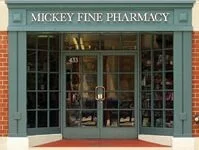 Mickey Fine is a pretty snazzy-looking place. It was originally one of those legendary Schwab Pharmacies where starlets were discovered while drinking milkshakes. As recently as March, it was a featured location in the Starz comedy series “Head Case.”
Mickey Fine is a pretty snazzy-looking place. It was originally one of those legendary Schwab Pharmacies where starlets were discovered while drinking milkshakes. As recently as March, it was a featured location in the Starz comedy series “Head Case.”
It’s not the kind of place you would normally associate with supplying a prescription drug habit.
Let me be clear: there is absolutely no evidence that Mickey Fine has done anything wrong here. But I hope its involvement in the Michael Jackson case will help us to think twice about preconceptions and stereotypes when it comes to prescription drug abuse.
Opponents of American citizens buying drugs from Canada have worked hard to associate online and mail-order pharmacies with the increase in prescription drug abuse — although there is absolutely not one shred of statistical evidence to support this claim.
The fact is, while it’s certainly possible to use online pharmacies to feed a drug habit, it’s just as easy to borrow medications from friends, sneak them out of your parents’ medicine cabinet — or to get prescriptions from multiple doctors and fill them at a place like Mickey Fine.
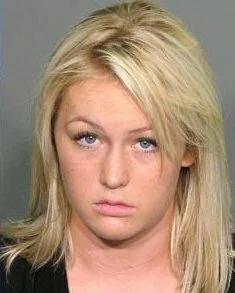 What could be more symbolic of the growing problem of prescription drug abuse among teenagers than this: a blond-haired, blue-eyed, 16-year-old cheerleader from a Christian high school selling Xanax, hydrocodone, Oxycontin, Demerol, and Percocet to fellow students from the comfort of the BMW her parents bought her?
What could be more symbolic of the growing problem of prescription drug abuse among teenagers than this: a blond-haired, blue-eyed, 16-year-old cheerleader from a Christian high school selling Xanax, hydrocodone, Oxycontin, Demerol, and Percocet to fellow students from the comfort of the BMW her parents bought her?
The girl’s name is Hunter Ashton Johnson. If police allegations are true, it will be interesting to find out where she got her supply; often, it’s from the parents’ medicine cabinet.
Full story here and here.
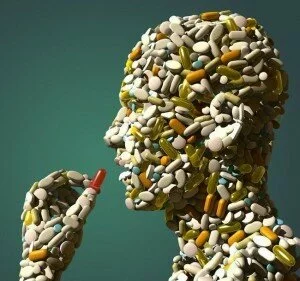 The Cleveland Plain Dealer posted an article Tuesday night about the longstanding — and arguably worsening — problem of prescription drug abuse among health professionals.
The Cleveland Plain Dealer posted an article Tuesday night about the longstanding — and arguably worsening — problem of prescription drug abuse among health professionals.
The part of the story I found most compelling was the section on D. Christopher Hart, a disgraced pharmacist who has worked hard to redeem himself by educating others. His story:
Hart, 54, lost his Ohio pharmacy license in December 2004, after being caught a second time taking Vicodin from pharmacies where he worked. The first time, in the early ’90s, his license was suspended. He went through treatment and five years of drug testing and AA meetings.
The second time, his license was revoked.
He had been stealing about 15 pills a day, which he said made him feel euphoric, “like a superpharmacist.” He thought he could manage it because he was the drug expert. “Then the disease kicks in, and you have no control,” he said.
Today, Hart lectures on the perils of addiction as an instructor at three Ohio pharmacy schools. He started the class at Ohio Northern University in 2005 with 10 students. Now the class is regularly filled. This fall he added teaching duties at the Northeastern Ohio Universities College of Medicine and Pharmacy in Portage County.
“Somebody in recovery needs to teach this course,” Hart said. “Students want to hear this kind of stuff. The situation is out there. Let’s not stick our heads in the sand.”
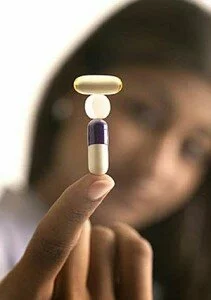 The Los Angeles Times reports on the growing problem of teen prescription drug abuse in today’s editions. Although the problem has been tied by some to the rise of Internet pharmacies, research shows that fewer than five percent of teen prescription drug abusers buy drugs from strangers (a category that includes online pharmacies). Most young abusers start in their parents’ medicine cabinet.
The Los Angeles Times reports on the growing problem of teen prescription drug abuse in today’s editions. Although the problem has been tied by some to the rise of Internet pharmacies, research shows that fewer than five percent of teen prescription drug abusers buy drugs from strangers (a category that includes online pharmacies). Most young abusers start in their parents’ medicine cabinet.
An excerpt from the story:
Among teens and young adults 12 to 25, one-third of those who use illicit drugs say they recently have abused prescription drugs — including painkillers, tranquilizers and stimulants. Among kids 12 to 17, 3.3% had abused prescription psychotherapeutic drugs in the last month. Among 17- to 25-year-olds, 6% had abused prescription drugs in the last month…
Studies suggest that for the current generation, as for past drug users, efforts to thwart distribution of some drugs shift thrill-seekers to others that are easier to score — a dynamic that helps explain the move toward prescription drugs…
More than half who reported they had recently taken prescription drugs for nonmedical uses said they got the drugs from a friend or relative for free, and almost 20% got them from a physician. About 1 in 10 who took prescription pain relievers said they bought or stole them from a friend or relative.
Drug enforcement officials have long noted that teens and young adults widely trade, sell and steal stimulant medications, heavily prescribed among student populations to treat symptoms of attention deficit hyperactivity disorder. Fewer than 5% told interviewers that they had had to resort to a drug-dealing stranger to acquire prescription drugs, or even to log onto an Internet site selling prescription drugs.
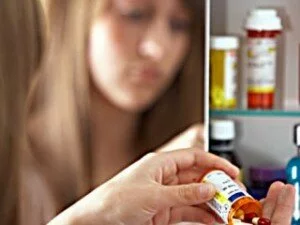 The National Center on Addiction and Substance Abuse at Columbia University (CASA), last week issued a fascinating survey of teens. Two results stood out to me:
The National Center on Addiction and Substance Abuse at Columbia University (CASA), last week issued a fascinating survey of teens. Two results stood out to me:
1. Teens (aged 12 to 17) indicated, for the first time, that it is easier to acquire “prescription drugs such as OxyContin, Percocet, Vicodin or Ritalin, without a prescription” than it is to buy beer.
2. While Internet pharmacies have been widely blamed for the increase in prescription drug abuse, few of the teens surveyed say that the drug abusers acquire their drugs from online pharmacies.
That’s right. Here’s what CASA’s press release says:
When teens who know prescription drug abusers were asked where those kids get their drugs:
- 31 percent said from friends or classmates;
- 34 percent said from home, parents or the medicine cabinet;
- 16 percent said other;
- Nine percent said from a drug dealer
You may recall that just last month, CASA issued a study warning that 85 percent of online pharmacies do not require a prescription. Clearly, the organization is strongly opposed (as we are) to rogue online pharmacies.
But I think it’s telling here that — even with all the negative media attention that online pharmacies are receiving — these kids didn’t say, “We buy our OxyContin online.” They said they’re sneaking pills from their parents’ medicine cabinets — or their friends’ parents’ medicine cabinets.
This says to me that we need to look beyond the easy scapegoat of online and mail-order pharmacies in getting to the root of the problem of teen prescription drug abuse.
Could it be that the billions of dollars drug companies have spent to advertise, promote and sell their drugs have resulted in a flood of pills on the market?
Could it be that we’re taught by wall-to-wall direct-to-consumer advertising today that there’s “a pill for every ill”?
In this environment, isn’t it reasonable for teens to seek out the much-hyped prescription drugs they keep hearing about?
Let me give you one example. Viagra is a very popular drug among young men, including even teens, who are not impotent but believe that Viagra will improve their sexual performance. Do you think — for even a minute — that Viagra abuse would be as severe if Pfizer had not spent millions of dollars shouting “Viva Viagra” from every rooftop in America?
If you do, you’re kidding yourself. And if you think the problem of teen prescription drug abuse will be solved by focusing on Internet pharmacies rather than the larger issues at work, you’re also kidding yourself.
The Indianapolis Star has a valuable article providing tips to parents who are worried about their teenage children abusing prescription medications. The article’s four tips:
- Monitor the prescriptions you have in your home.
- Secure your medicines.
- Dispose of old prescriptions.
- Communicate and set a good example for your child.
It’s nice to see a reasonable — and actually useful — article on this issue, rather than the hysterical attacks on licensed Canadian pharmacies that this topic often inspires.
Read the full article here.
Also, check out Not in My House, a Web site from the Partnership for a Drug-Free America.
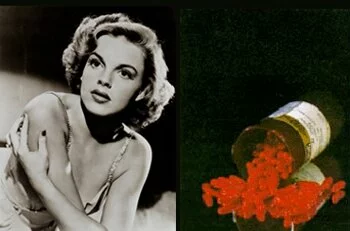
The Florida Times-Union, the newspaper of Jacksonville, FL, published an editorial today headlined, “Internet Pharmacies: A prescription for death.”
We’re not crazy about that headline, as you might imagine. We’ve worked very hard to get the news media to distinguish legitimate, licensed Canadian pharmacies from dangerous, rogue online pharmacies in their coverage. But you know how it is.
In any case, we were pleased that the Times-Union’s editorial used one of our blog posts to illustrate the seriousness of the problem of prescription drug abuse. The relevant excerpt:
Most people know that Elvis Presley and Marilyn Monroe both died from an overdose of prescription drugs.
Judy Garland also succumbed to a prescription drug overdose – as did Howard Hughes and Anna Nicole Smith, reports eDrugSearch.com, a medication advocacy site.
Then, there was Paige Summers. The Web site says she was 1998 Penthouse Pet of the Year.
Five years later, she was killed by an overdose of codeine and oxycodone.
For those who haven’t read it, here’s the full blog post on celebrity prescription drug overdoses.
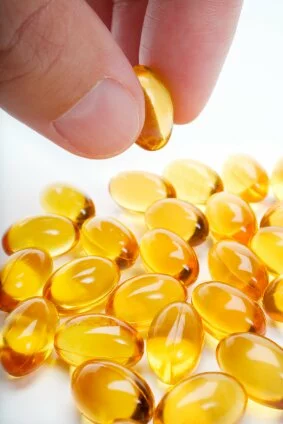
With all the talk of the dangers of online and mail-order pharmacies in the media these days, it’s important to remind ourselves that when people are determined to do the wrong thing, they’ll do it with or without the Internet’s help.
I came across a great example of this in the news the other day, where in Prichard, Alabama, police arrested a man and woman for running a drug ring selling prescription drugs illegally.
How did the woman — Angela Hurst, 28 — build her supply? By ordering them from a rogue pharmacy online?
Nope. Here’s the story (italics mine):
Narcotics officers say Hurst called in at least 200 hundred fake prescriptions to area drug stores. Hurst was allowed her to get her hands on more than four thousand pills. Police say the suspects even bragged about how easy it is to outsmart local pharmacies.
If you’re a criminal or a junkie, you’ll find a way to do illegal things. That’s the sad truth.
Obviously, a lot has been said and written linking Internet pharmacies to prescription drug abuse. But prescription drug abuse occurs every day without the Internet being involved at all. In most cases, in fact, abusers are prescribed their meds by a doctor and pick them up at the corner pharmacy.
How does this happen? Shouldn’t physicians know when they’ve overprescribed a potentially dangerous drug to a patient?
Yes, an individual doctor should know. But most prescription drug abusers don’t just go to one doctor. They go to several. It’s called “doctor shopping.”
Actor Heath Ledger didn’t die from ordering drugs over the Internet. He died because he ordered too many drugs from too many different doctors. No one doctor would have approved Ledger’s drug regimen.
The Wall Street Journal’s health blog posted a great piece last Thursday on a man who is on a crusade to end the scourge of doctor shopping in California by upgrading a database that will allow physicians to check patients’ prescription drug history. The current system is virtually useless, slowed down by outdated technology (hint: fax machines are involved.)
What we really need is a database like this on a national basis. We should require both online and offline pharmacies to use it, at the risk of losing their license if they don’t. And, once we get past the politics over Canadian drug reimportation and bring licensed Canadian pharmacies officially into the fold, we can require them to use the database, too.
Of course, the problem is that privacy advocates will say it’s a violation of our rights, and right-wing pundits will say it’s a step toward socialized medicine. But if we’re committed to keeping prescription drug abusers off the streets, it’s something we must do.
Check out this video that some high school kids put together for their health class, warning teens of the dangers prescription drug abuse. Pretty decent production values. When I was in school, we were still watching filmstrips and being given smelly copies from the mimeograph machine.
-
 Subscribe in a reader
Subscribe in a reader -
Search Blog Posts
-
Ads

-
-
How to Safely Buy Prescription Drugs Online from Cary Byrd on Vimeo.
-
Medi-Share: Christian Health Insurance Alternative
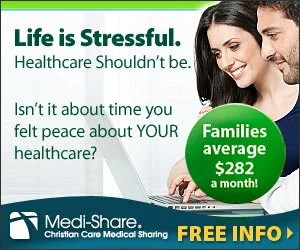
-
Archives
-
Our Healthcare100 Ranking
-
Tags
adverse drug reactions big pharma buy drugs online Canadian drugs canadian pharmacies canadian pharmacy compare drug prices consumer reports divine healing Drug costs Drug interactions Drug Prices drug safety tips drug savings tips dtc advertising eDrugSearch.com FDA healing scriptures Health 2.0 healthcare100 Healthcare blogs high drug costs high drug prices Jehova Rophe Jesus Christ licensed Canadian pharmacies licensed online pharmacies Lipitor mail order pharmacies medicare coverage gap medicare doughnut hole Medi Share miracles online pharmacies online pharmacy safety personal drug importation pharmacy spam prescription drug abuse Prescription drugs reimportation rogue online pharmacies save money on prescriptions The Great Physician The Lord our Healer Wal-Mart $4 generic drug program